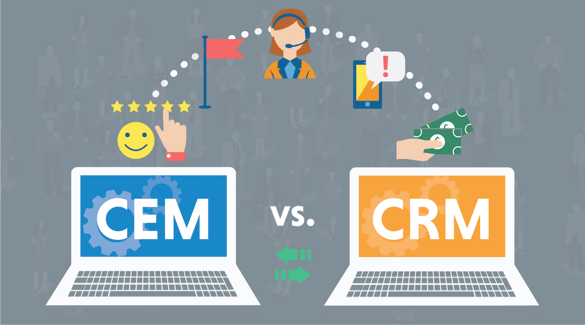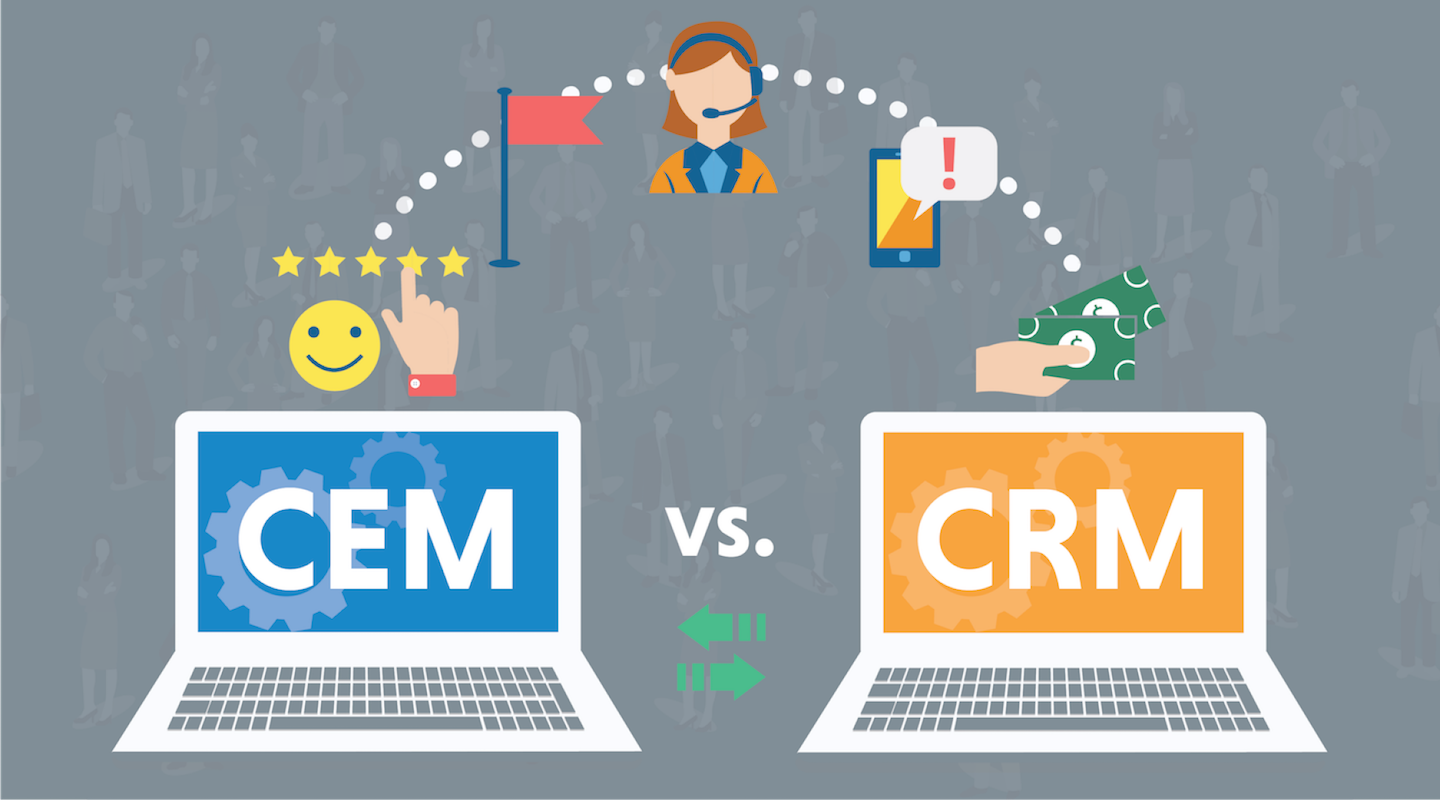“Customer Experience Management (CEM) and Customer Relationship Management (CRM) are the same, right?”
Not quite.
While it may be true that at their core, both systems revolve around the key interactions a customer has with your brand, CRMs and CEMs serve distinctly different purposes and operate from two contrasting angles.

CRMs tell you what is happening (prospect & customer contact information, what they bought, when they bought it, how much was spent, size of their company, etc.); while CEMs tell you why it's happening (why do prospects convert... or not, why do customers return... or not, why do they buy more or buy less, etc.).
CRMs are about leveraging your customer and operational data to manage customer accounts from an "inside out" perspective; while CEMs take an "Outside In" approach, leveraging much of the same transactional customer and operational data captured by CRMs to build a real-time understanding of your brand's relationship with its customers.
Let's delve a little deeper into the key differences...
Customer Relationship Management (CRM) pertains to the processes, practices, and software enabling companies to manage and analyze prospect and customer interactions and transactional data throughout a customer’s lifecycle. Typically leveraged by Sales & Marketing teams, CRMs help to centralize the management of leads and improve customer relationships with ultimate objective of driving customer retention and sales growth.
CRM systems (such as Salesforce, HubSpot, or Microsoft Dynamics) are used to record and manage a company's overall data and interactions with current, past and potential customers. These systems capture customer data from disparate information silos such as emails, ERP systems, and business intelligence tools to provide analytics around sales cycles, marketing campaigns, customer acquisition strategies, etc. Analytics surrounding other customer interaction metrics, such as time spent interacting with your business, average sales price per transaction, and configuration of purchased products and services are also generated or captured by CRM systems.
While CRMs essentially capture transactional sales data and record details about a customer or account, they do not inherently reveal the customers' true sentiment and perceptions when interacting with your brand at different touchpoints. Companies that obsess over CRM data often fail to recognize or integrate customer feedback data, which is simply not a sustainable practice in the long haul of maintaining healthy customer relationships. That’s where CEM comes into play.
Customer Experience Management (CEM) is a set of systems and processes that measure, track, analyze, and manage customer interactions with your brand over time. Best when accessed by all employees at a company (not just one team or department), the ultimate objective of a CEM system is to cultivate and improve customer satisfaction and loyalty by connecting your organization to the real-time Voice of The Customer (VoC). CEM platforms are designed to solicit and capture experiential data from customers through surveys and other feedback channels. It is about setting up “listening posts” to collect customer feedback and sentiment, then leveraging that data to expose actionable insights that can be used to improve operations and the end-to-end customer journey.
CEM systems capture and integrate unfiltered customer feedback with other customer data to detect trends and draw insights that help drive better business decisions to improve the overall customer experience. By capturing and analyzing feedback on the customer experience, companies can more accurately determine which aspects of the customer journey do not meet expectations and, as importantly, prioritize and decide what to do to remediate and improve on those issues.
With customers becoming more vocal and demanding, their perspective should be prioritized when developing business and operational strategies. Innovative small and medium-sized businesses are creating superior customer experiences over the "big guys" by fully leveraging CEM and Voice of the Customer insights to beat the Goliaths in their spaces.
System Harmony
CRMs are a critically important tool to help assemble customer data and operate on a day-to-day basis, but they fundamentally lack the Voice of Customer in their perspective. CEMs complete the customer-centric picture, using insights from customer feedback data to prioritize customer follow ups, flag at-risk accounts, and systematically identify opportunities to drive better business processes and decisions.
The best organizations understand the differences between these two customer-focused systems, and work to create harmonious connections between them to get the most out of their customer data. A company will not be able to fully interpret their CRM data without the critical customer feedback captured by CEMs; and without customers, your company will cease to exist.
David Rode is an experienced CEO, President & Chief Operations Officer with extensive global experience and a demonstrated track record in the cloud & software-as-a-service industries. Skilled in Operations; Technical Leadership & Product Management; Negotiation; Sales; Customer Relationship Management (CRM); Go-to-market Strategies & Managed/Professional Services, David is a strong strategic and operational leader and holds an MBA in Finance from Wharton School, University of Pennsylvania.
Talk to David
P.S. What did you think of this blog post?
 |
 |
 |





%20(1).png)